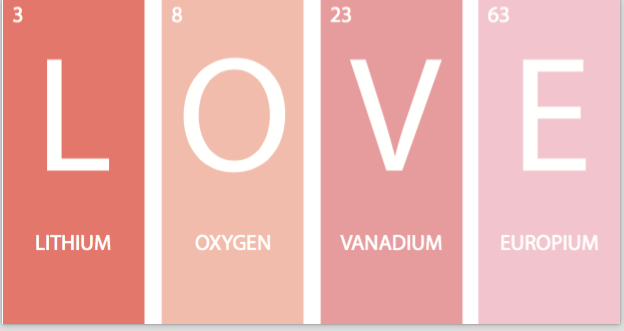
Love. Such a small word with a huge impact.
Everyday, love hangs over you like a guardian angel, omnipresent and intoxicating.
Most songs are about love, most movies are about love — if not about love per se, there is always a romance side story along with the main storyline — most books are about love, about “soulmates.”
There have also been numerous works of art inspired by love. Take the Taj Mahal one of the seven wonders of the world created by the Mughal emperor Shah Jahan in memory of his wife, Mumtaz Mahal.
What is love?
According to C. Sue Carter and Stephen W. Porges, researchers at the Research Triangle Institute International in Research Triangle Park love is not just a feeling, it is a biological necessity with a physiological explanation.
Without love, humans are unable to live their lives to the fullest despite their basic needs being met.
Love is boundless, natural, and a requirement for survival.
Humans are drawn to love their offspring, family, friends and lovers.
Carter and Porges discovered that being in the presence of an infant forces the release of the love hormone — oxytocin. Basically, an infant’s existence forces you to love.
This oxytocin release results in an affection also seen in other primates, like the mandril. the neuropepetide oxytocin, evolutionarily, is released to ensure the survival of the infant, as well as the species, by ensuring that the infant is taken care of and the mate is protected. It is what creates the feeling of love.
Love is deeply biological, with physiological explanations.
Through research conducted on animals, while substituting parenting and species preservation as a representative of love, it is seen that the interactions between oxytocin and vasopressin are what cause the dynamics that allow humans to express and feel love.
Hence, it is commonly known by scientists who study love that interactions between oxytocin and vasopressin play an important role in social interactions.
Although most actions by these two hormones have been labeled redundant, they are known for actions with social significance, like huddling over a baby to protect it. This is why these hormones are also known as the “cuddle hormones.”
However, the release of oxytocin depends on several other factors that play into our need to love, such as, the release of endogenous opioids, dopamine and norepinephrine, which are responsible for attraction and the feeling of reward.
As we interact with our loved ones and communicate socially, the hypothalamus, a part of our brain, releases dopamine. This induces a feeling of euphoria and giddiness, released when we do things that feel good to our brain.

What are Oxytocin and Vasopressin?
Vasopressin has been found to be the reason behind the physiological need for a mammal to engage in behaviours that are needed to protect a partner or your territory, like vigilance and forms of robust self-preservation.
This hormone also prevents the body from physiologically shutting down when in danger, like a chicken playing dead when exposed to loud noises or other scary stimuli like seeing a stuffed hawk, this response to fear is known as “tonic immobility.”
Competitive behaviours are fairly common in many mammalian species when defending their young, likely due to vasopressin-oxytocin interactions.
For example, Carter and Porges stated, “Before mating, prairie voles are generally social, even towards strangers.
However, within approximately one day of mating, they begin to show high levels of aggression towards intruders, possibly serving to protect or guard a mate, family or territory. This mating-induced aggression is especially obvious in males.”
Conversely, oxytocin can be linked to states of relaxation, physical abilities that allow birth and the following physiological changes that allow for the care of an infant, like lactation.
This hormone, as it increases during birth, allows a mother to feel less anxious around her newborn and express love.
Oxytocin also allows for the ability to engage in consensual sexual behaviour which ensures the survival of the species.
It is seen that, in extremely social mammals like humans, the interactions between the cuddle-hormones are what cause familial love and the desire to protect your loved ones.
Bonded by trauma.
This phrase is a common one, and it has some truth to it.
As we learned earlier, oxytocin and vasopressin are in part responsible for protection and self-defense.
This means in the face of a threatening situation, like an earthquake, or a turbulent airplane, a person releases these hormones and as the threat ceases, they release norepinephrine.
Due to the release of these hormones, a person might experience feelings of love and attraction for whoever they are experiencing this trauma with.
Love heals. Literally.
According to studies conducted in the past decade, love actually has the power to heal.
Without love, we spiral. Carter and Porges have seen that being raised with care in a safe environment actually modulates behaviour in social mammals.
Oxytocin and vasopressin literally have the ability to fix a metaphorically broken heart.
They are the antidotes for a broken heart. The heart has oxytocin receptors, responsible for the reception of oxytocin followed by an effect.
This is essential for the growth of the fetal heart, as oxytocin creates a protective barrier around the heart and is responsible for the conversion of stem cells into cardiomyocytes which are responsible for the mechanism behind pumping the heart.
In an adult, oxytocin is responsible for the repair of tissues and for the development of the brain. For its normal function, protection and mending, the heart relies on oxytocin.
Love in action.
This love and desire for protection can be seen in everyday examples: when a parent feeds and clothes their child, provides shelter and stability, sends them to school and ensures their future protection, sometimes even at the cost of their own happiness.
Then there’s romantic love, an intimate relationship between two people with emotional attachment and passionate affection for another person, a relationship that’s uncertain and unpredictable but still beautiful.
Simply being in the presence of your significant other lifts the spirit.
There you have it. The science behind love.





























